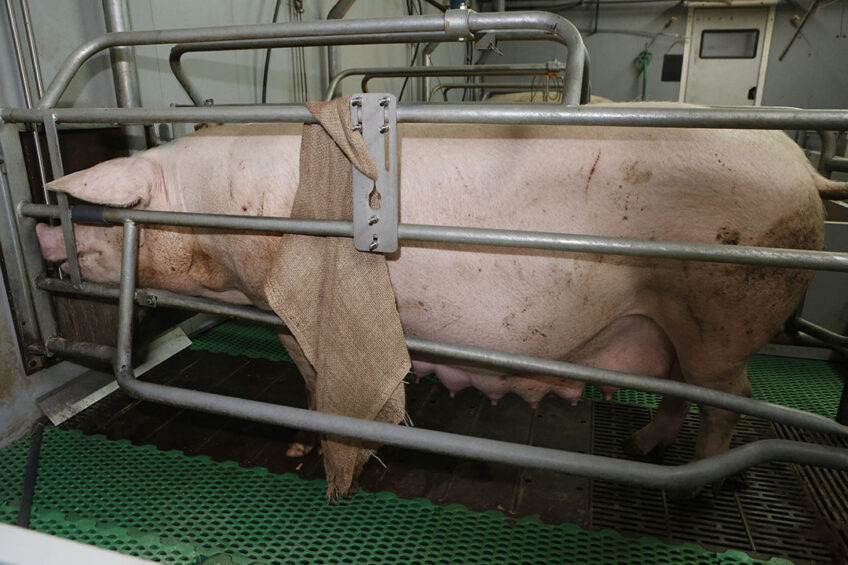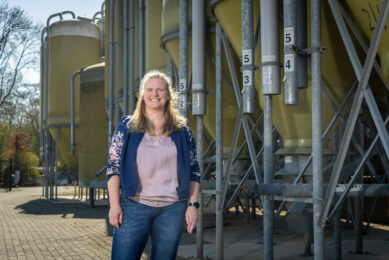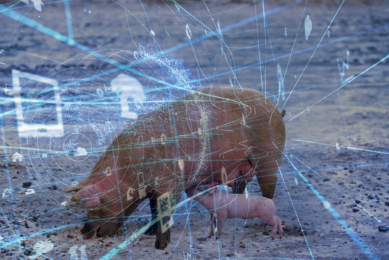A promising model for sow lameness detection

Researchers argue that developing a 2-dimensional stick model to simulate sows walking on concrete floors helps detect sow lameness.
Sow lameness is one of the major concerns in the swine industry. It affects affecting sow welfare and productivity. Visual scoring is the most common method to evaluate lameness. This is which time and labour intensive and is prone to observer error. Automated lameness detection methods that do not rely on human eyes and are more accurate.
Data collection
Researchers recorded non-lame sows and gilts walking on slatted concrete floors. They placed reflective markers on each leg from one side and on the back, representing joints in the model. To extract the motion data from the video images, a sow skeleton was represented by its trunk and four limbs. Each step was modelled as 4 consecutive movements: a foot leaving the ground, swinging, touching, and stance.
Then, the images of the reflective marks were used to develop a 2-dimensional stick model to simulate the movements of a sow body. Later, 24 Yorkshire × Landrace sows and gilts with reflective markers on their bodies walked along a corridor of concrete floor. The researchers used the ensuing video images to detect lameness. If the gait of a sow deviated from the model simulation to a certain degree, the sow was considered lame.
Gait characteristics of non-lame sows
The general gait characteristics for non-lame sows include walking speed, back angle, diagonality, stride length, swing time, and stance. All sows display a lateral-sequence walk with the diagonality ranging from 0-50%. The average walking speed is 0.89 m/s, and the back angle is 172± 3°. The average stride lengths of forelimbs and hindlimbs are approximately 89 cm and 88 cm, respectively. The swing time of forelimbs and hindlimbs are 426 ms and 433 ms, respectively and the stance time is 567 ms for forelimbs and 570 ms for hindlimbs.
Gait characteristics of lame sows
To detect sow lameness using a 2-dimensional stick model, researchers had to identify the most sensitive gait parameters predicted by the model.They also needed to identify the threshold deviation for those parameters. In this study, lame sows displayed a lateral-sequence walk but with lower diagonality than that ofthe non-lame sows. In addition, lame sows had slower walking speeds, narrower back angles, a longer stance time, and shorter average stride lengths as an adaptation to decrease pain.
Is the 2-dimensional stick model accurate?
Significant differences in gait parameters between the model predictions and the measured values for lame sows indicate the potential of using the 2-dimensional stick model. Based on the magnitudes of differences between the model’s predictions and the measurements, back angle, walking speed, diagonality, stance time, and stride length are most sensitive for detecting lameness. The stick model adequately predicted the gait parameters with an accuracy of more than 92% for lameness detection. However, researchers developed the model on relatively small size datasets. They also only tested it on lame sows as positive subjects.
Promising ability
In their conclusion, the researchers wrote that “Although the 2D stick model developed in this research was primitive, it did show a promising ability to detect sow lameness. More validation with a larger scale of datasets might be necessary to enhance the robustness of the model”.











